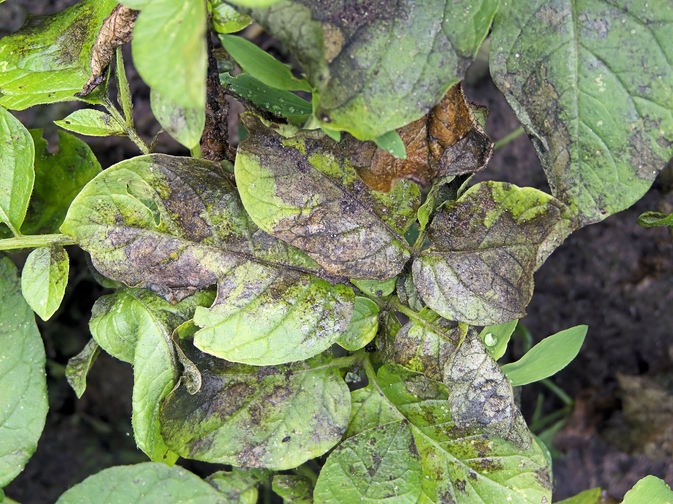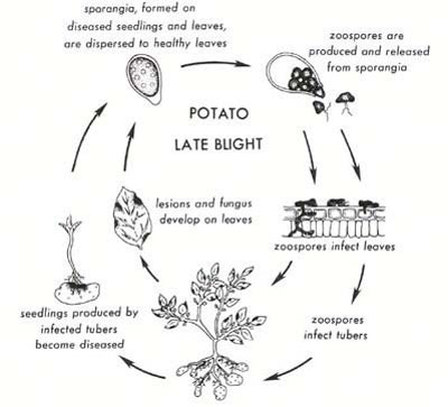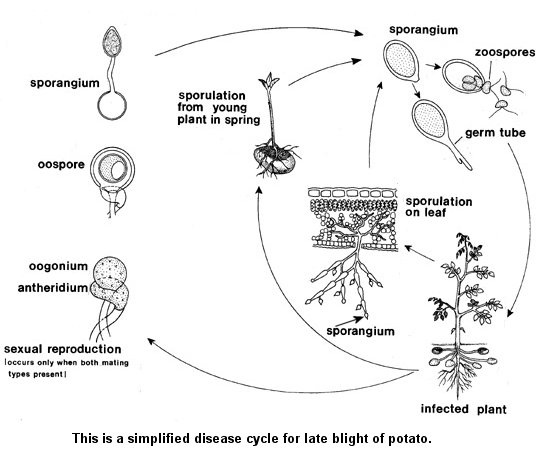 Phylogeny (4)
Phylogeny (4)
Description(2):
- The branched sporangiophore, with swellings at the points where sporangia were attached are distinctive for Phytophthora infestans and useful for identification of this pathogen
- Causative agent for the plant disease, late blight
- Affects potato and tomato plants (8)
- Kingdom Chromalveolata (5)
- Member of Oomycota (1)
Nutrition(8):
- Obtains plant nutrients by using its hyphae
- Does not obtain very many nutrients from the host until it establishes itself within the epidermal cells of the host
- When it has established itself, hyphae can readily uptake nutrients
- Required Nutrients: organic carbon, oxygen, hydrogen, phosphorus, nitrogen, sulfur, potassium, magnesium, iron, trace elements, and thiamine
Reproduction(8):
- Grows in plant tissue to grow in
- Usually reproduces asexually
- The life cycle usually begins as the sporangia are carried by the wind, land on plant tissue, and release their zoospores (indirect germination)
- Occurs when conditions are wet and cool
- The spores are biflagellated—having both a tinsel and whiplash flagellum (characteristic of oomycota)
- The spores will swim until they encyst in the host
- In warm conditions, P. infestans will infect the plant by direct germination (a germ tube forms from the sporangium and penetrates the host tissue allowing it to gain nutrients from its host)
- Sexual reproduction occurs when both mating types are present: The antheridium and oogonium (the only haploid parts in the life cycle of P. infestans) nuclei fuse together (karyogamy) when the antheridium enters the oogonium then they form a diploid oospore, which develops into a sporangium and the cycle continues as it would asexually
Conservation Status(8):
- Caused the epidemic in the 1840s in Ireland but in recent years (1980s) a second mating type was discovered in North America that threatened crops
Interesting facts(2):
- The disease caused by this protist is famous for the destruction of the potato crops in Ireland in the 1840s and the resulting famine and death of over a million people; today, epidemics recur in disease conducive environments



